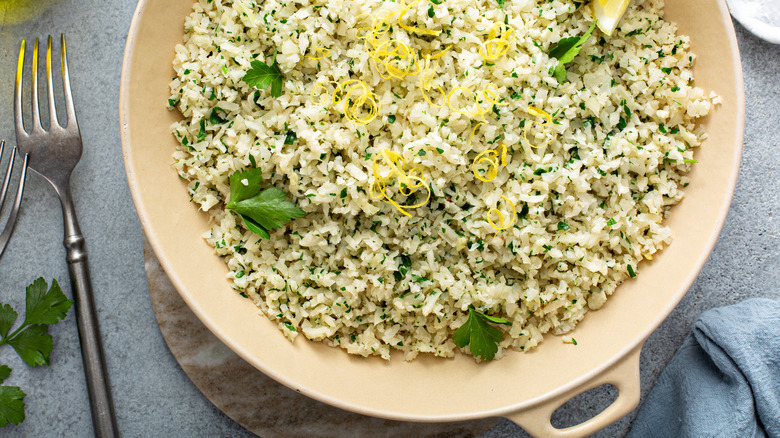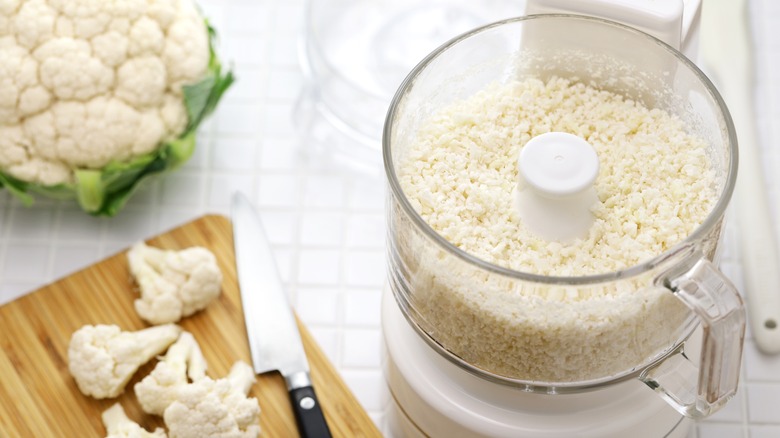The Sauteing Mistake You're Making With Riced Cauliflower
Not a fan of cauliflower rice? Chances are that you're just not preparing it properly. While there are all sorts of ways to cook it, steaming or boiling can rid the starch-free rice of its bite. Instead, sauteing is the preferred method for allowing the cauliflower to maintain some crunch. But, if you find yourself frequently faced with soft and waterlogged cauliflower rice even with sauteing, then it's time to adjust cooking times.
Although you might assume that more time in the pan is a good thing for cauliflower rice, that couldn't be further from the truth. Rather than encourage moisture to be pulled out from the cauliflower and promote drying, the reality is that the longer the rice-substitute is left over the heat, the more it starts to break down. As a result, the trick to crisper cauliflower rice is to simply to reduce the amount of time it spends cooking.
Since fragments of riced cauliflower are quite small, they really don't need much time to cook anyway. By keeping saute times as brief as possible — ideally, around mere minutes — the rice is able to develop color and caramelize, becoming just the slightest bit tender without turning too much. That said, it's better to keep cauliflower rice closer to a par-cooked state than to risk overcooking it into something that totally lacks texture.
The dos and don'ts of sauteing cauliflower rice
Based on the type of riced cauliflower used, prep is subject to changing. For example, since frozen rice is especially susceptible to becoming mushy, it must be handled accordingly, which means cooking it directly from frozen. Yet, that doesn't mean that freshly riced cauliflower doesn't risk a similar fate when mishandled. To avoid compromised textures, it's essential to keep moisture at bay. Evidently, it's best to always place just-grated cauliflower in a cheesecloth, wringing out well, before cooking.
With the rice prepped, it can be added to a hot pan with some oil. Note that the skillet shouldn't be overcrowded. If bits of cauliflower are piled on top of one another they not only risk uneven browning, but they can start to steam and reduce any chance of caramelization. Likewise, while it's important to occasionally stir the rice, excessively moving cauliflower can also take a toll on texture. Moreover, save the seasoning until after cooking — salting early on can draw moisture from the cauliflower rice, again leading to a less than ideal outcome.
After about 3 minutes, the riced cauliflower should be done. At which point, it can be pulled from the heat. However, it's still wise to take measures to prevent softening beyond the point of no return. Rather than serve the starch-free rice directly under sauces and curries, keep it dry and serve it on the side in one final attempt to ensure a more satisfying bite.

